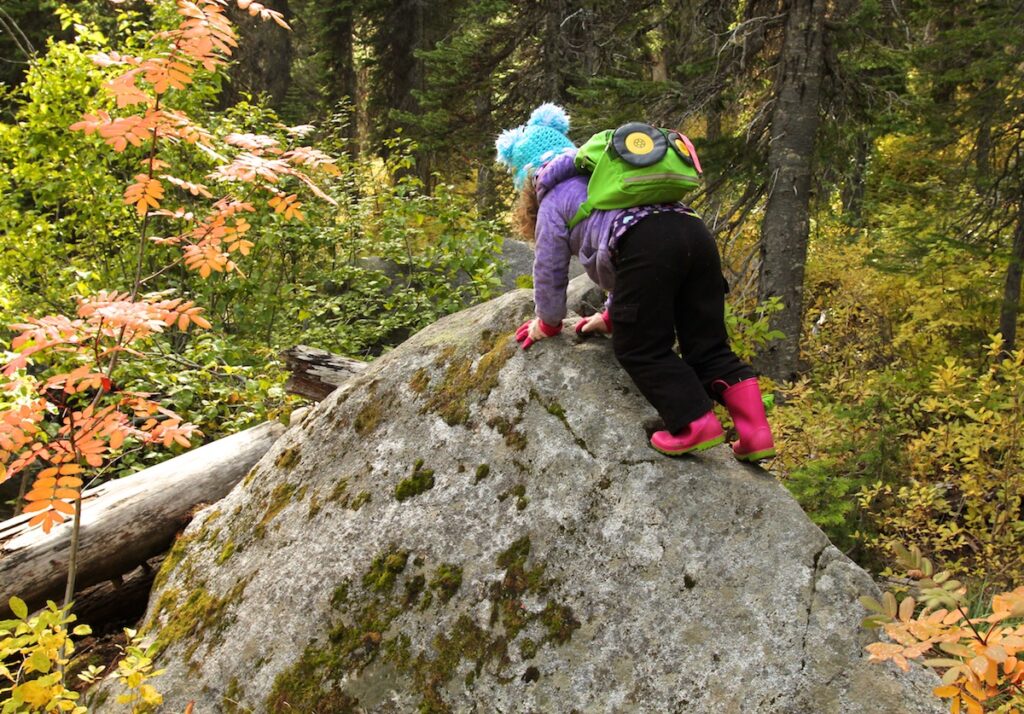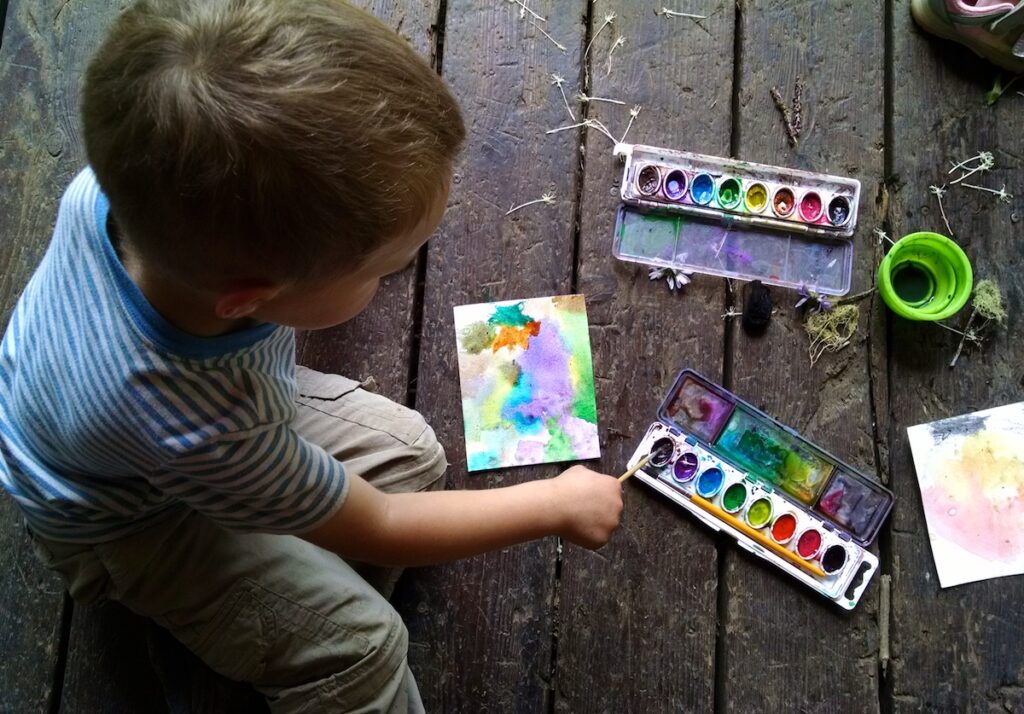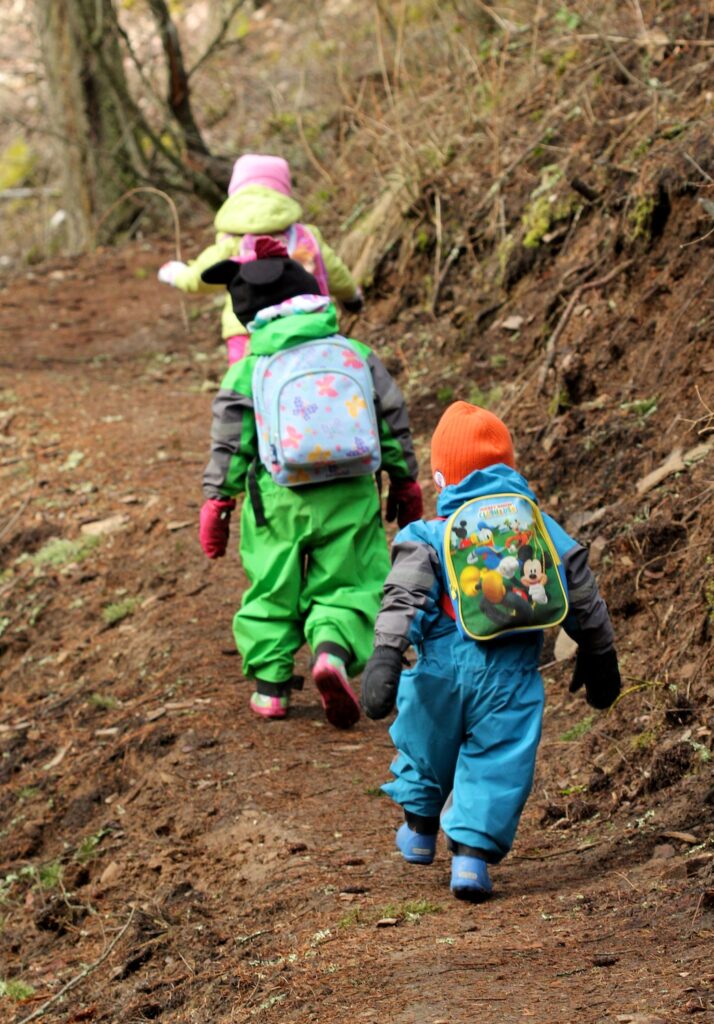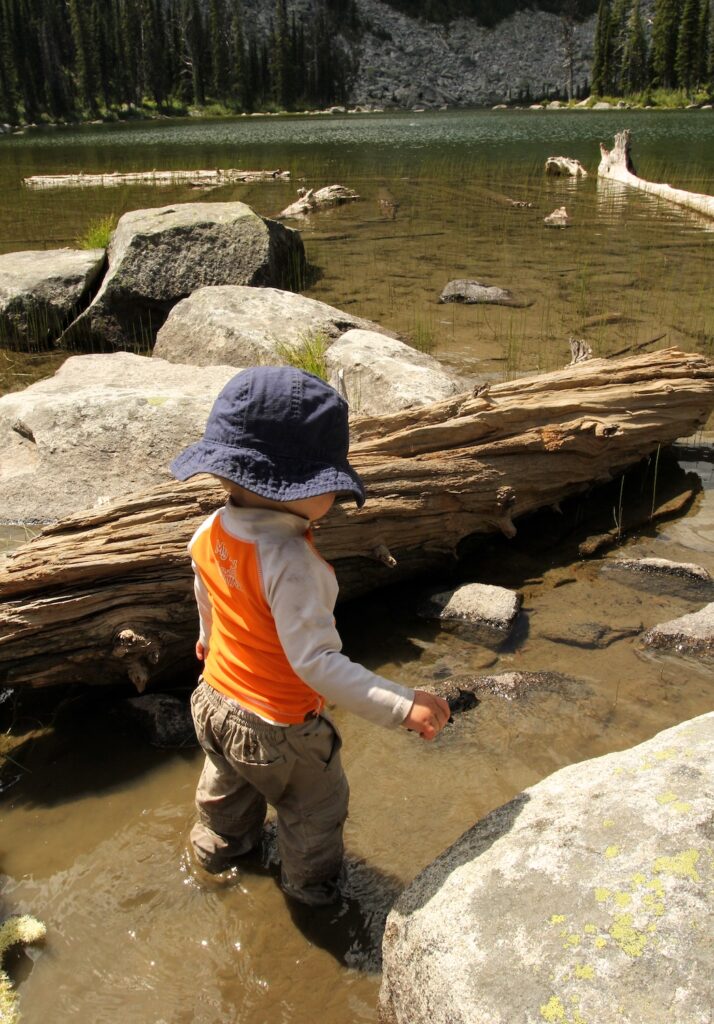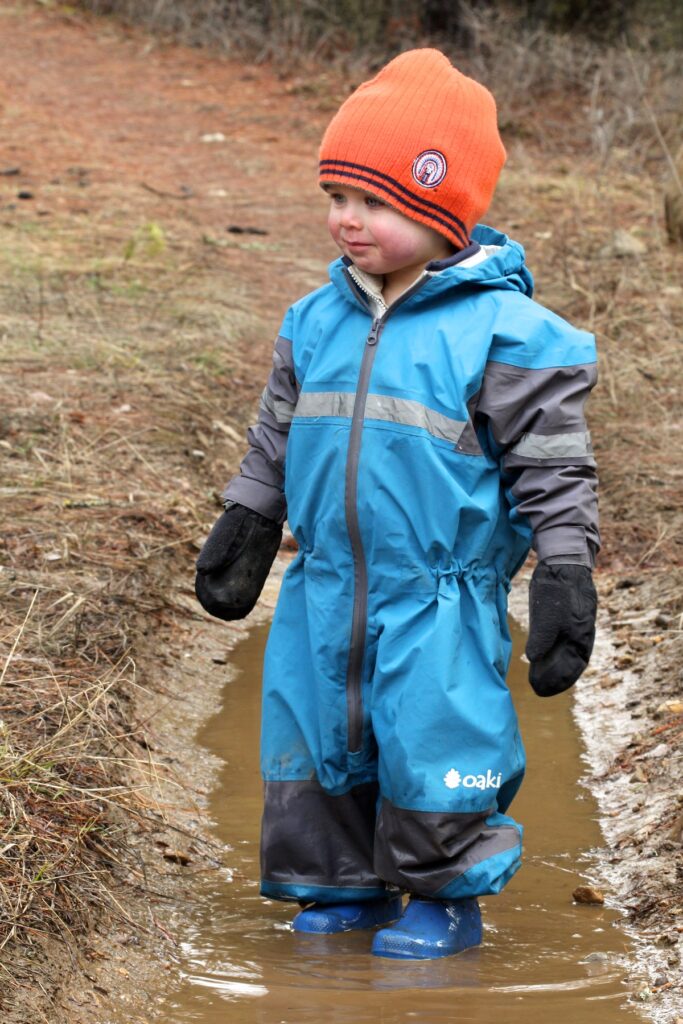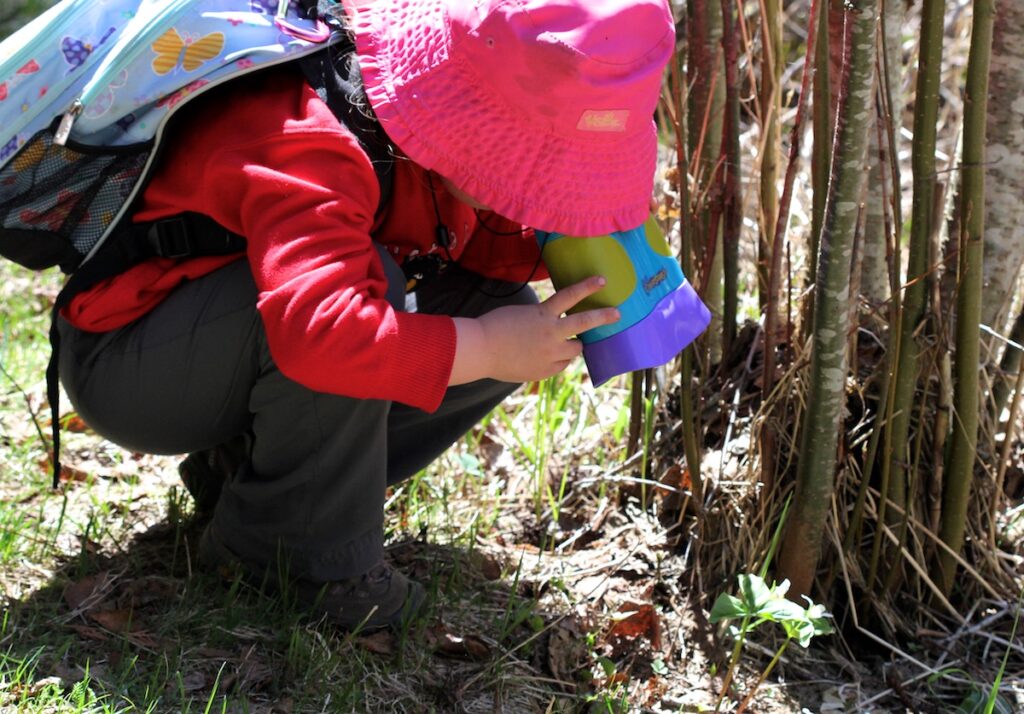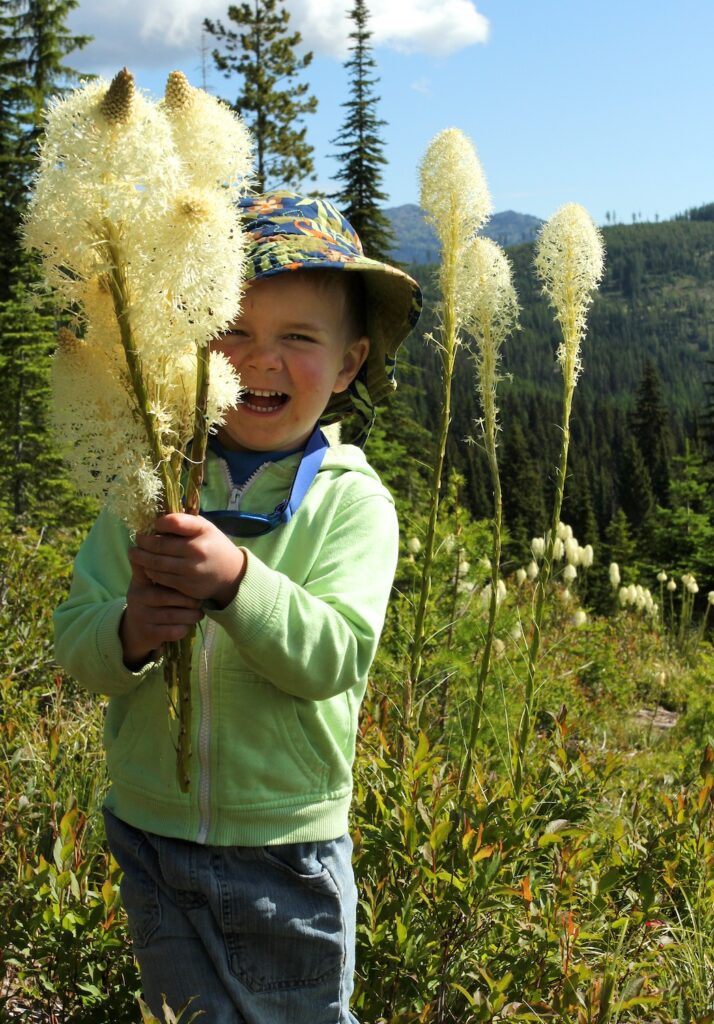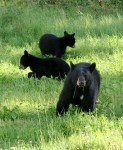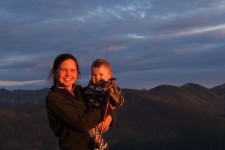Naturally North Idaho is a participant in the Amazon Services LLC Associates Program, an affiliate advertising program designed to provide a means for sites to earn advertising fees by advertising and linking to amazon.com. This post may contain affiliate links, which means I may receive a commission, at no cost to you, if you make a purchase through a link. Please see my full disclosure for further information.
Ooh, a caterpillar. Look a wildflower! That’s a giant mushroom.
Hiking with young kids requires a shift in expectations. When they were babies in front carriers and backpacks, I could hike miles to the high mountain lakes. Those hikes are now saved for hiking without the kids (which is needed now and then). Someday the kids will have enough endurance for long hikes.
Adjusting expectations is huge with young kids.
“Let’s try a mountain lake,” I said one summer day. A not-too-difficult hike into a mountain lake. But that day the kids just weren’t into hiking–a little extra whining instead. Luckily we were hiking with friends.
Three-quarters of a mile up the trail, we took a break and had snacks. Then my friend pulled out her watercolors and all the kids played with watercolors for a good half-hour right next to the trail! After that, I started to carry a watercolor set in my daypack.
We decided to skip the lake and instead head home. We did a rainbow scavenger hunt on the trail back and found every color of the rainbow (thank goodness for fall color).
Hiking with young kids is full of wonder (and truthfully, some whining), but with the tips below, our hikes have been more enjoyable. These tips also apply to older kids-they like to explore too!
Here are 10 tips for hiking with young kids:
1. Leave an itinerary
Always tell someone where you are going and when you plan to return.
Just in case someone gets hurt, the truck won’t start, you can’t get the spare tire on, or any other reason that having someone else come would be a relief. I live in an area where there is minimal cell coverage in the mountains, so leaving an itinerary is a good safety precaution.
2. Hike with another family
Hiking with other kids brings excitement and creativity to the hike. They can pretend together, build off of each other’s ideas, and provide motivation to keep going. An added bonus is an adult to talk to!
3. Keep the journey flexible
Don’t set expectations on time or distance. If you don’t make it to the lake, waterfall, mountain peak, don’t worry (it is hard to adjust to that mindset).
If the kids are having fun playing on the huge rocks next to the trail, then enjoy the moment and join them. It’s the journey that counts (even if you want to make it to the destination).
Another option is to carry a backpack child carrier for rest breaks. Then when the kid is tuckered out, you can load him up so he can rest. Then when he is ready to explore again just carry the empty backpack (a break for you!).
I regularly used the Osprey Poco child carrier backpack (in the photo below) and even had two when both my kids were small enough to be carried. That way my husband and I could each carry a kid and make it to farther destinations.
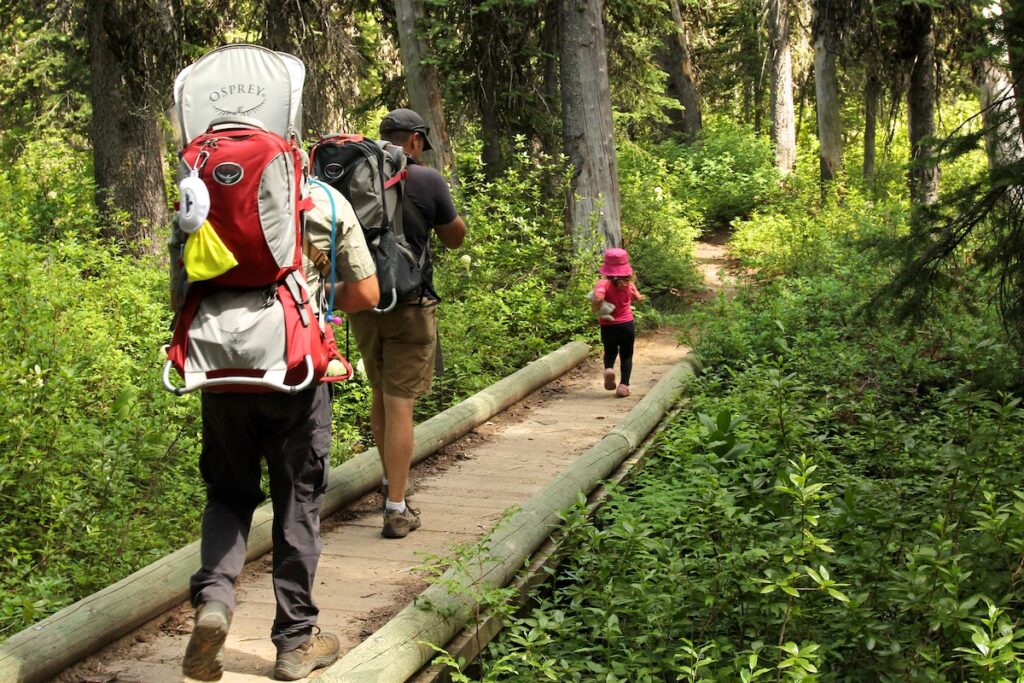
4. Embrace being dirty
Yes, dirty kids make me cringe sometimes but they love jumping in mud puddles.
Be prepared and have extra clothes, mittens and shoes in your daypack (and a bag to hold the wet clothes in) or your vehicle at the trailhead. I loved these durable Oakiwear rain suits with velcro cuffs on the ankles and wrists to keep the kids dry.
5. Wear the right gear
“There’s no such thing as bad weather, only unsuitable clothing,” said Alfred Wainwright.
If I know it’s going to be muddy, the kids wear rain boots and rain gear (we loved these Oakiwear rain suits) to help them stay dry. In the winter, I make sure they have long-cuffed mittens to prevent snow on the wrists.
In the summer, the kids wore sun-protective shirts, wide-brimmed hats and closed-toed sandals.
Dressing for success helps make happier hikers.
6. Pack lots of water and food
Pack water, snacks and/or a picnic. Yes, they might ask for a snack fifty feet from the trailhead, so try to distract them a little bit. Snacks work wonders though.
We have snack breaks and a picnic lunch on longer exploration days. Always bring more snacks than you think you need–kids burn lots of energy hiking and exploring. I try to have an extra snack in the vehicle for the ride home on long exploration days.
My kids loved the “squishy” pouches that I would fill with applesauce, smoothies or yogurt (bonus that they are reusable food pouches).
Bonus tip: Bring a small picnic blanket (a baby blanket works well) to keep the food out of the dirt.
7. Let them carry their own backpack
They take pride in carrying their own things and can bring their own special things like a small stuffed animal. While it won’t be much, it will save room in your pack.
They can carry their own extra layer (fleece, rain jacket, mittens), sunglasses and maybe even a small snack. Just keep the backpack light so they don’t tire out as easily.
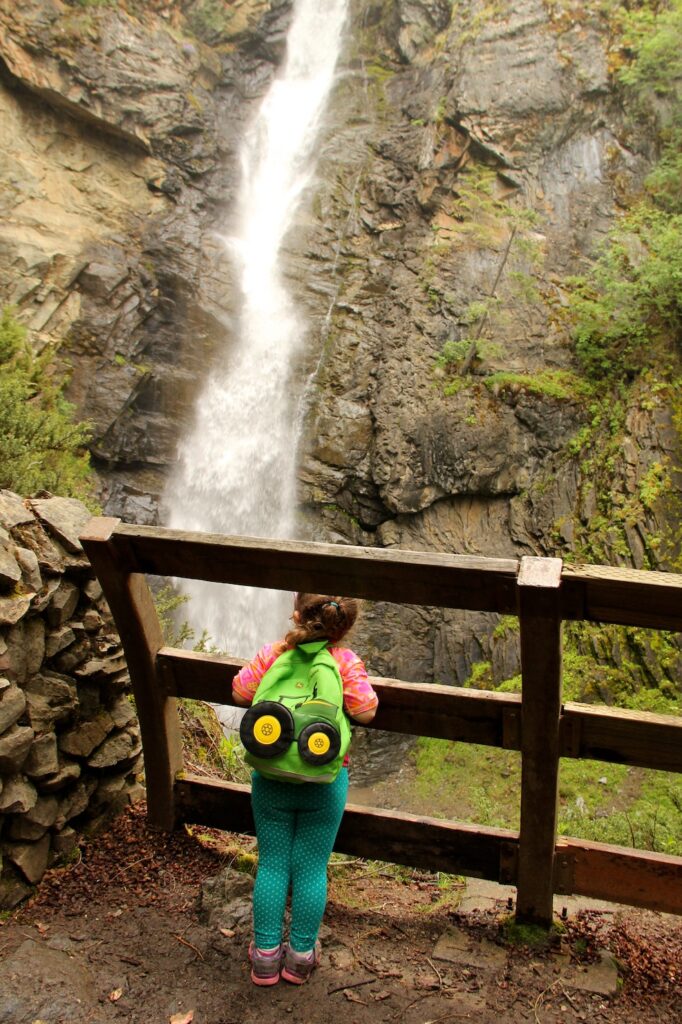
8. Bring items for exploring
Yes, it adds weight but it is all about exploring. My kids have binoculars (these are our favorite kid binoculars because they worked with glasses), a camera (ask family if they have an old digital point and shoot they no longer use) and parts of a bug collection kit in their daypacks.
They also have treasure bags my friend made (you can also use a plastic bag or an empty plastic jar) to hold special rocks, flowers, sticks (if you’re in an area that allows that).
Another great addition is art supplies. Keep it simple with a small notebook and pencil. Or have an art-to-go bag with a colored pencils, small watercolor set, paintbrush, small plastic bowl for water, and small pieces of watercolor paper. You can change up the art supplies every few hikes to keep the inspiration flowing.
Depending on the location, I bring a butterfly net, small buckets and beach shovels for exploration, holding a frog to look at, or playing in the tiny creek next to the trail.
9. Let the kids lead
My son loves being in the lead. If it makes for a happy hike, why not. He knows to stop at trail junctions, not go out of sight and that he needs to take turns with the other kids leading (which isn’t always easy).
Leading encourages leadership and the chance to be the first to spot special things like flowers or woodpecker holes. Being behind the kids allows me to keep track of them.
10. Be prepared with a checklist
Last on the list but the most important is to be prepared. I have a checklist in my mudroom, so I remember all the essentials and the fun exploration gear.
Remember to bring a map, first aid kit, sunscreen, hats, extra snacks and extra clothes (because accidents still happen).
If you are recreating in bear country, be prepared. You may feel comfortable carrying a firearm, if not, carry bear spray. I have a holster that straps around my chest, so even if I take my backpack off, I still have the bear spray on me because sometimes we set down our packs to go explore or have a picnic. In the last nine years of hiking with kids, I have never seen a bear (we seem to be loud enough), but I’m always prepared.
Remember, you don’t have to drive hours to reach a cool destination. Kids can be fascinated with the smallest thing or the shortest hike. Enjoy the journey the best you can.
Do you have any tips for hiking with young kids?
Disclaimer: Please note some of the links are affiliate links and as an Amazon Associate, I earn from qualifying purchases through these links. These links help you find products plus support this website. I have purchased and used all of the products and any opinions expressed are entirely my own.

